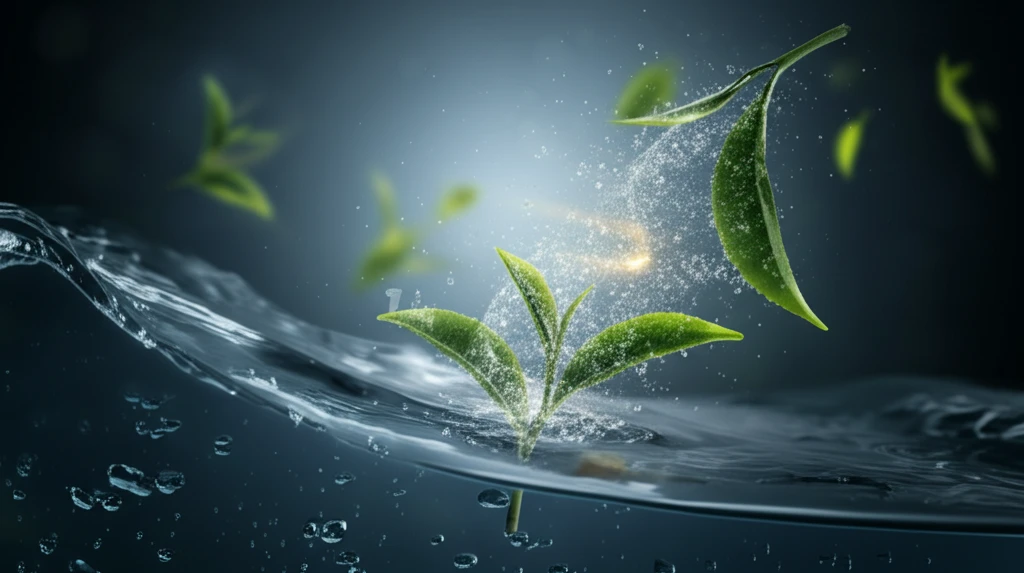
Trash to Treasure: How Kitchen Waste is Revolutionizing Water Safety
"Discover how scientists are turning tea residue into a powerful tool for detecting chlorine in our water, making it safer and more sustainable."
Ensuring our drinking water is safe has always been a top priority. One common method for disinfecting water is the use of chlorine, which effectively kills harmful pathogens. However, maintaining the right balance of chlorine is crucial. Too little, and the water remains unsafe; too much, and it can lead to the formation of dangerous byproducts like trihalomethanes, known for their harmful effects on human health. These byproducts have been linked to respiratory problems, cardiovascular issues, and even cancer.
Traditional methods for detecting free chlorine in water often involve complex processes, expensive equipment, and sometimes, toxic chemicals. These methods can be time-consuming and may not be practical for widespread, continuous monitoring. As a result, there's a growing need for simpler, more efficient, and environmentally friendly ways to ensure our water is safe to drink.
Now, imagine turning something as ordinary as kitchen waste into a high-tech tool for water safety. Researchers have discovered a way to create carbon nanodots from tea residue, transforming this everyday waste into a sustainable solution for detecting free chlorine in water. This innovative approach not only addresses the need for better water quality monitoring but also promotes sustainability by utilizing waste materials.
What are Carbon Nanodots and Why Are They a Game-Changer?

Carbon nanodots (CDs) are tiny, fluorescent nanoparticles with remarkable properties. Unlike traditional semiconductors, quantum dots, or organic dyes, carbon nanodots are non-toxic, highly soluble in water, and resistant to photobleaching, making them ideal for various applications. Their surface can be easily modified, allowing them to be tailored for specific tasks, such as detecting chemicals in water.
- Sensing: Detecting various substances, including free chlorine.
- Bioimaging: Visualizing biological structures and processes.
- Drug Delivery: Delivering medications to specific targets in the body.
- Photocatalysis: Accelerating chemical reactions using light.
- Optoelectronic Devices: Creating new types of electronic devices.
The Future of Water Safety is in Our Kitchens
The development of carbon nanodots from kitchen waste represents a significant step forward in sustainable water quality monitoring. By turning waste tea residue into a valuable tool for detecting free chlorine, scientists are not only improving our ability to ensure water safety but also promoting a more sustainable and environmentally friendly approach to technology. This innovative solution has the potential to transform water quality monitoring, making it more accessible, affordable, and eco-conscious for communities around the world.
